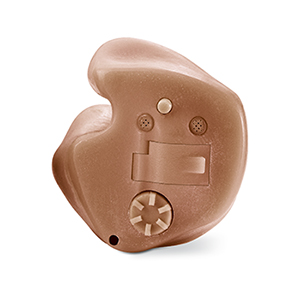Hear Your World Better - Hearing Aids at North Carolina Eye, Ear, Nose & Throat
General Hearing Aid Information
Once you have been identified with a permanent hearing loss, it is time to select the appropriate amplification for yourself or your child. Hearing aids will help you to hear those sounds better and can be fit on patients of any age.
It is important for you to be fit with hearing aids as soon as possible after the hearing loss is identified.
For children, the earlier the hearing aids are fit, the better the chance that listening, speech skills, language, and reading will develop appropriately.
What are Hearing Aids?
Hearing Aids are electronic, battery-operated devices that amplify or make sounds louder.
Hearing Aids Contain:
⦁ A microphone picks up sounds in the environment and changes it to an electrical signal.
⦁ An amplifier takes the electrical signal and increases the level.
⦁ A receiver takes the signal and converts it back to sound, which is then directed into the ear canal so your child can hear the sound.
⦁ The hearing aids contain digital technology and are programmed for your exact hearing loss.
⦁ An amplifier takes the electrical signal and increases the level.
⦁ A receiver takes the signal and converts it back to sound, which is then directed into the ear canal so your child can hear the sound.
⦁ The hearing aids contain digital technology and are programmed for your exact hearing loss.
Visit NCEENT for Cary, Chapel Hill, and Durham Hearing Ads and Hearing Aid Information and Services
It is important that hearing aids are worn during all waking hours and used consistently so that you can better adjust to listening.
The style of hearing aid that you will need depends on:
⦁ The size of the ear
⦁ The amount of hearing loss
⦁ The age of the patient
⦁ The amount of hearing loss
⦁ The age of the patient
Hearing aids and earmolds can come in many colors and programs to help you hear in most listening environments.
Special settings on hearing aids can be used for use on the telephone. Tamper-resistant battery doors are also available.
Hearing aids can sometimes be compatible with smart phones and FM systems for school and at home.
Frequently Asked Questions About Hearing Aids ( link to FAQ)
Types of Hearing Aids
Behind-the-Ear (BTE)
 (002).jpg)
Behind-the-Ear (BTE) fit behind the ear and direct the sound into the ear by tubing, which is connected to an earmold that is worn in the ear. (Motion 13N)
BTEs are appropriate for most hearing losses. BTEs are the most appropriate style for babies and children because of their growing ears.
Receiver-in-Canal (RIC) (CRT/RIC/RITE)
.jpg)
Receiver-in-Canal (RIC) (CRT/RIC/RITE) hearing aids place the loudspeaker directly in the ear without a fitted earmold. These instruments use soft ear inserts to position the loudspeaker in the patient’s ear.
In-the-Ear (ITE)

In-the-Ear (ITE) are custom made to fit into the ear and are worn in the ear much like an earmold. All of the components of the hearing aid are built into the custom shell.
In-the-Ear (ITE) are custom made to fit into the ear and are worn in the ear much like an earmold. All of the components of the hearing aid are built into the custom shell.
In-the-Canal (ITC) (insio itc)
The ITCs are the smallest of the hearing aids. In-the-Canal (ITC) are custom fit to the ear and sit in the ear canal.
The Completely-in-the-Canal (CIC)
.jpg)
The Completely-in-the-Canal (CIC) is a smaller version of the ITC and fits only in deep in the ear canal. Also the ears need to be large enough so that the components of the hearing aid can fit into the custom shell.
